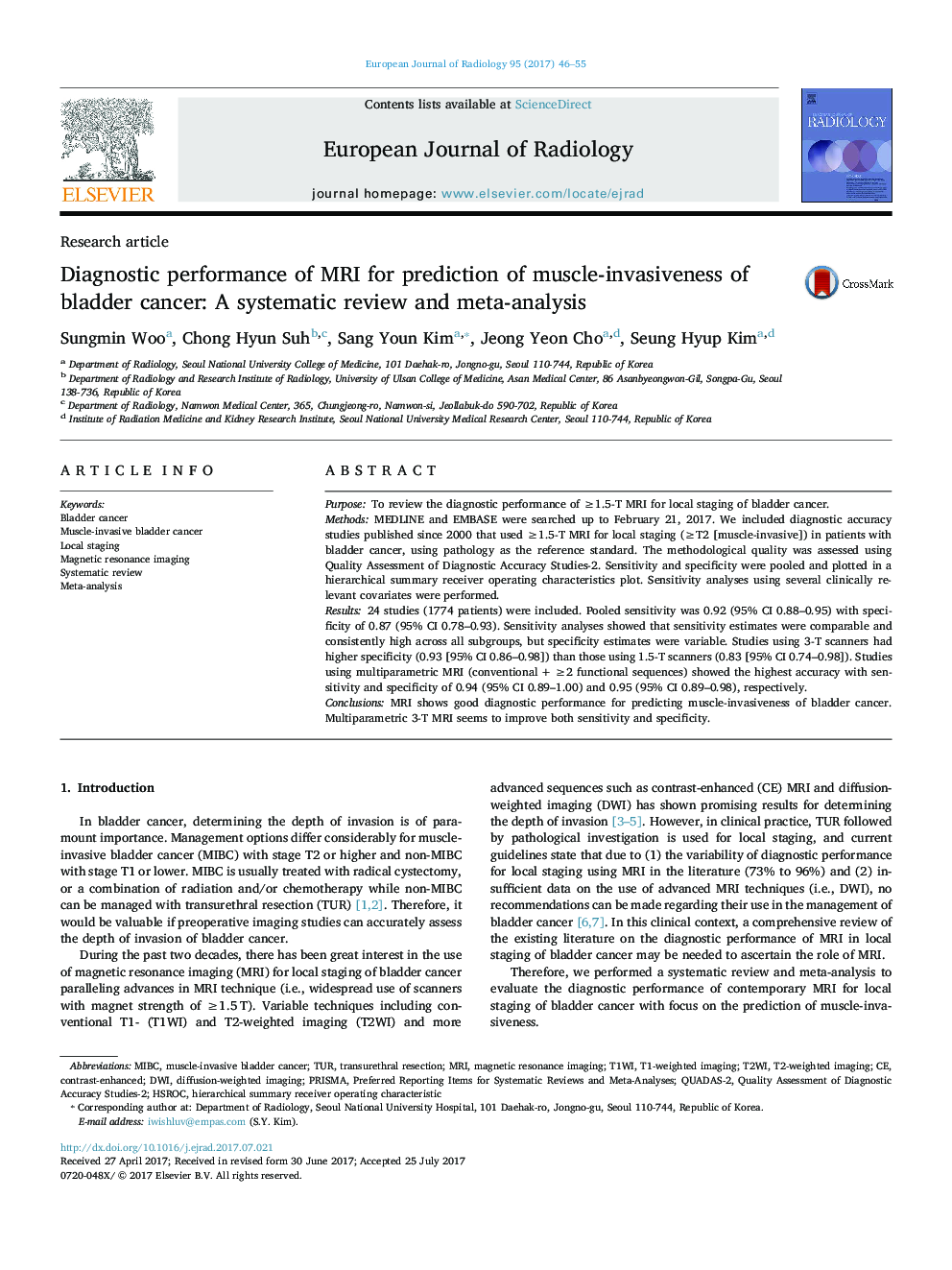| Article ID | Journal | Published Year | Pages | File Type |
|---|---|---|---|---|
| 5726004 | European Journal of Radiology | 2017 | 10 Pages |
PurposeTo review the diagnostic performance of â¥1.5-T MRI for local staging of bladder cancer.MethodsMEDLINE and EMBASE were searched up to February 21, 2017. We included diagnostic accuracy studies published since 2000 that used â¥1.5-T MRI for local staging (â¥T2 [muscle-invasive]) in patients with bladder cancer, using pathology as the reference standard. The methodological quality was assessed using Quality Assessment of Diagnostic Accuracy Studies-2. Sensitivity and specificity were pooled and plotted in a hierarchical summary receiver operating characteristics plot. Sensitivity analyses using several clinically relevant covariates were performed.Results24 studies (1774 patients) were included. Pooled sensitivity was 0.92 (95% CI 0.88-0.95) with specificity of 0.87 (95% CI 0.78-0.93). Sensitivity analyses showed that sensitivity estimates were comparable and consistently high across all subgroups, but specificity estimates were variable. Studies using 3-T scanners had higher specificity (0.93 [95% CI 0.86-0.98]) than those using 1.5-T scanners (0.83 [95% CI 0.74-0.98]). Studies using multiparametric MRI (conventional + â¥2 functional sequences) showed the highest accuracy with sensitivity and specificity of 0.94 (95% CI 0.89-1.00) and 0.95 (95% CI 0.89-0.98), respectively.ConclusionsMRI shows good diagnostic performance for predicting muscle-invasiveness of bladder cancer. Multiparametric 3-T MRI seems to improve both sensitivity and specificity.
